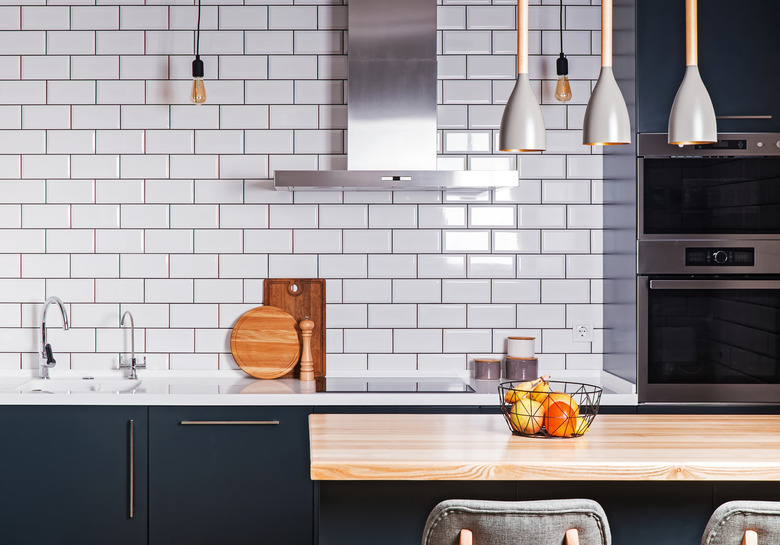The Standard Depth Of A Counter Backsplash
A backsplash protects the wall above a counter from moisture and is easy to keep clean. Even though a backsplash is relatively thin in depth or thickness, it can protrude a little into the counter space. Therefore its depth should be considered before buying backsplash tiles for a renovation project.
Other necessary installation items, such as backer board and mortar, should be considered as well since they will add to the overall thickness of the backsplash. With all the elements together, a backsplash is often about 1 inch thick or just a little less.
Backer Board for Backsplash
Backer board — also called cement board — is sometimes needed before installing a backsplash. It is placed directly on the studs or over top of the existing wall. It provides a smooth surface on which to install the backsplash and protects the wall behind from moisture in the tile mortar. Backer board typically adds an extra 1/4 or 1/2 inch to the overall counter backsplash depth if it is installed on top of the wall.
In some areas, especially in the West, according to This Old House, installers often set ceramic tile in thinset adhesive over a mortar bed that is about a half-inch thick. This floated mortar bed is about a half-inch thick. In other areas, particularly in the East, cement backer board will probably be used as the substrate, and this requires sheets of either 1/4-inch or 1/5-inch thick backer board that are screwed to the wall.
Ceramic Tile Backsplash
Ceramic tiles make for modern, sleek-looking backsplashes. You can also create one-of-a-kind patterns with ceramic tiles. Whether your ceramic tiles are made from glass, porcelain or clay, most backsplash wall tiles are between 3/16 to 1/4 inch thick.
When installing ceramic tile, figure on a 1/2 inch thick layer of mortar, whether you use thinset adhesive or a cement backer board. This adds depth to your backsplash that is easy to overlook in initial calculations. However, because the tile is pressed lightly into the mortar, you'll lose about one-fourth to one-half of this thickness. So consider that the mortar will add about a quarter inch to the depth of your backsplash.
Other Types of Backsplashes
Laminating medium density fiberboard (MDF) is commonly used as a counter backsplash. It is available in varying thickness, typically 3/4 to 1 inch thick. These backsplashes are often rolled back, extending about 4 inches above the countertop and protruding 3/4 of an inch to an inch from the wall.
Backsplashes can also be made from metal. Whether it's steel, copper, nickel or brass, metal backsplashes are usually 1/16 inch thick. These can be attached straight to the wall, or backed with MDF for more stability. Since these must be custom made to fit your exact area and around receptacles and other obstacles, metal backsplashes will likely cost you more than other types of backsplashes.
Stone backsplash is set similar to ceramic tile, on a mortar bed or cement backer board with thinset adhesive, or over drywall with mastic. Stone may vary a bit in thickness, but a mortar bed that is 3/4 of an inch thick is recommended. Once a stone or tile backsplash is sealed, however, it requires little maintenance.
